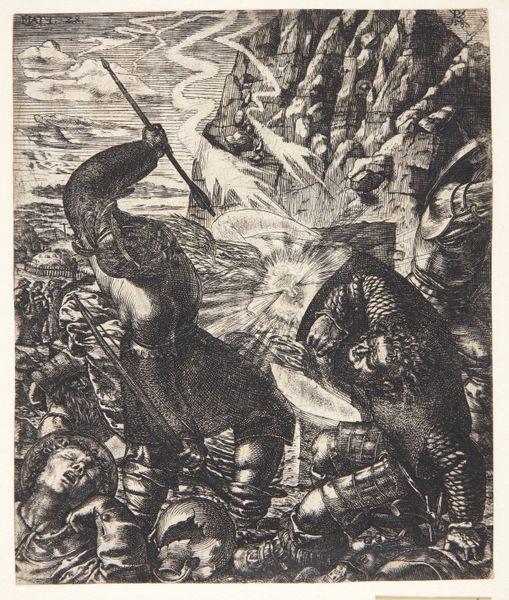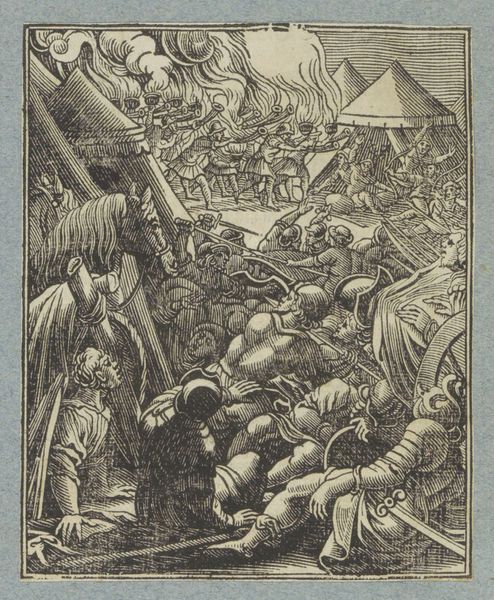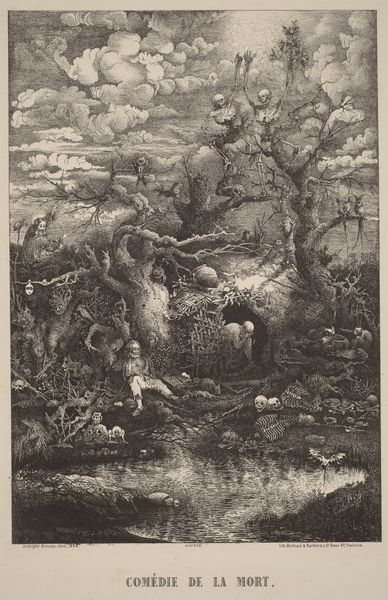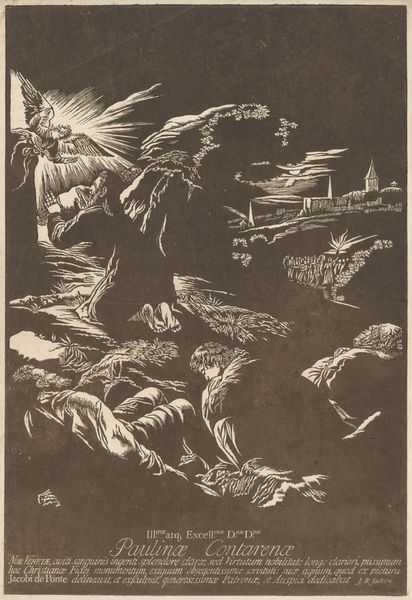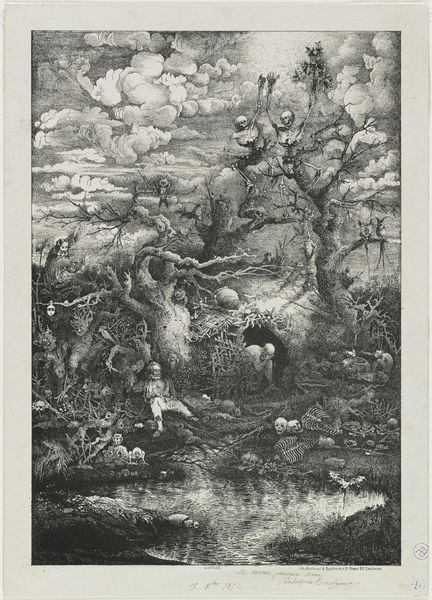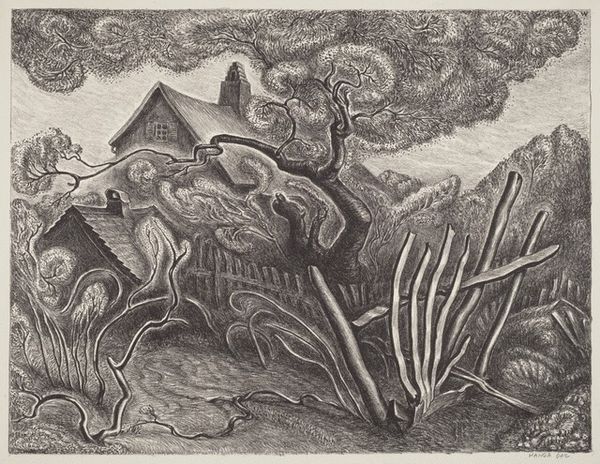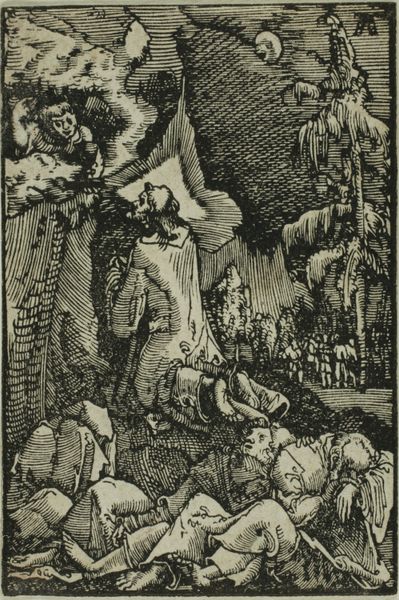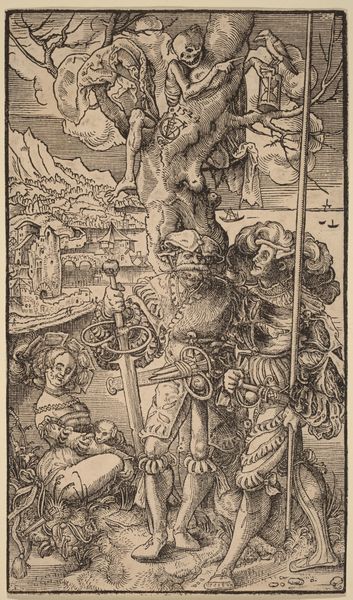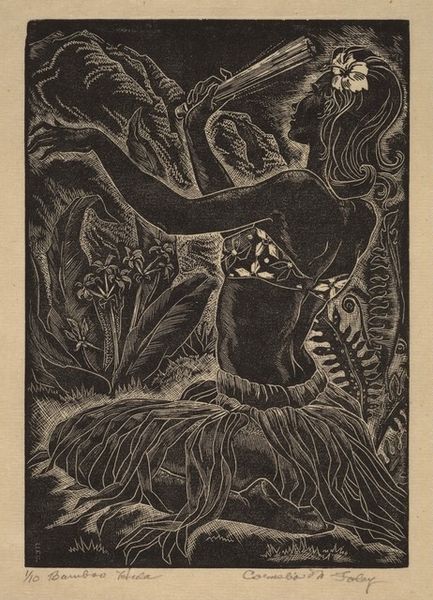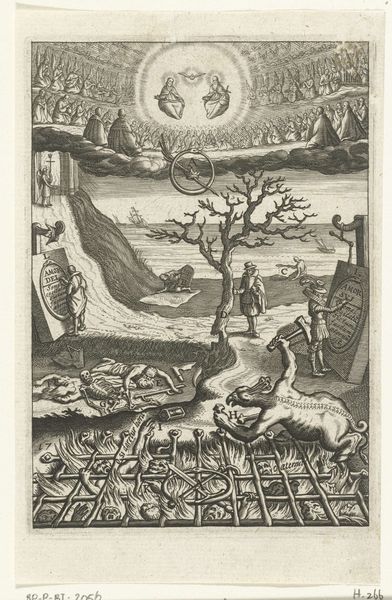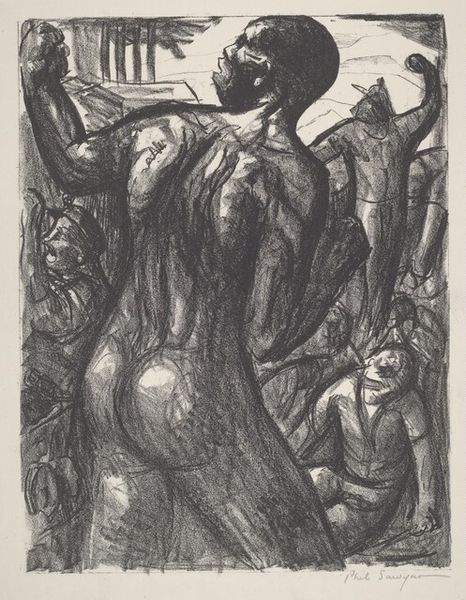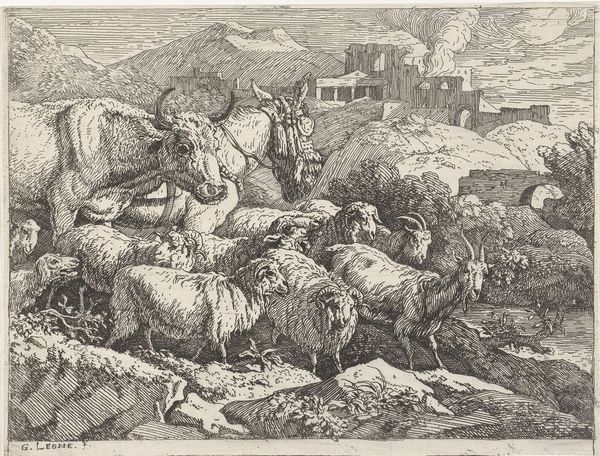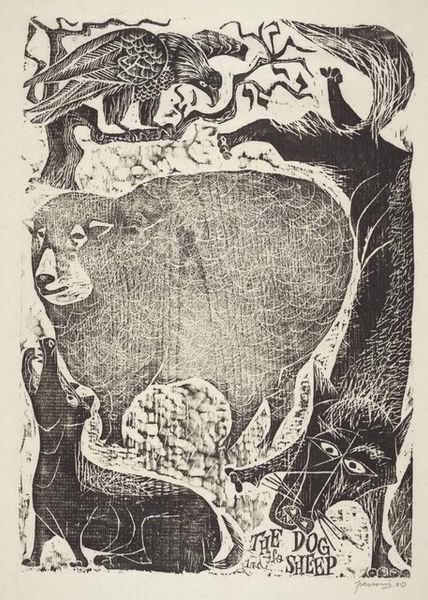
print, woodcut
#
narrative-art
# print
#
landscape
#
figuration
#
woodcut
#
mexican-muralism
Copyright: National Gallery of Art: CC0 1.0
Editor: This is "Mexico," a 1945 woodcut print by Leopoldo Méndez. It’s striking. I'm immediately drawn to the powerful, almost ominous symbolism throughout. How do you interpret this work? Curator: The image vibrates with the weight of cultural memory, doesn't it? Méndez layers imagery like geological strata. What catches your eye about the eagle at the top? It dominates the composition, doesn't it? Editor: Absolutely. The eagle with its wings spread, perched on a cross… except those aren’t just any ordinary crosses, they seem to be adorned with scythes, giving it a very foreboding feel. It looms over a city, adding to the sense of threat. Is it meant to symbolize a particular historical event or period? Curator: It is about conquest, old and new. Think about the pre-Columbian and colonial layers embedded here: the eagle, of course, is a national symbol derived from the Aztec founding myth. But the cross subverts that—pierced with what appear to be weapons, suggesting interrupted sacrifice, incomplete conversion. What does that imply about national identity to you? Editor: It feels like it questions a purely celebratory view of Mexican history, hinting at a darker, more complicated truth. Below the eagle, there's a man lying on what seems to be an open book. The thorns surrounding him, and the serpent winding behind. Curator: Precisely! The book as both history and potential—being written, interpreted. Do you recognize any of those thorny plants? And the serpent? Editor: I think that's the nopal cactus. And the serpent evokes Quetzalcoatl perhaps, but twisted, almost menacing...It’s like he's saying the past is alive, shaping the present. Curator: Precisely. Méndez masterfully intertwines pre-Columbian, colonial, and modern symbols to question Mexico's evolving identity in the aftermath of revolution and during global conflict. It compels us to reflect on how historical trauma reverberates in the present. Editor: That makes the artwork incredibly powerful. I hadn't fully grasped the dialogue between pre-colonial symbols and the impact of colonialism. I see that tension so clearly now!
Comments
No comments
Be the first to comment and join the conversation on the ultimate creative platform.
